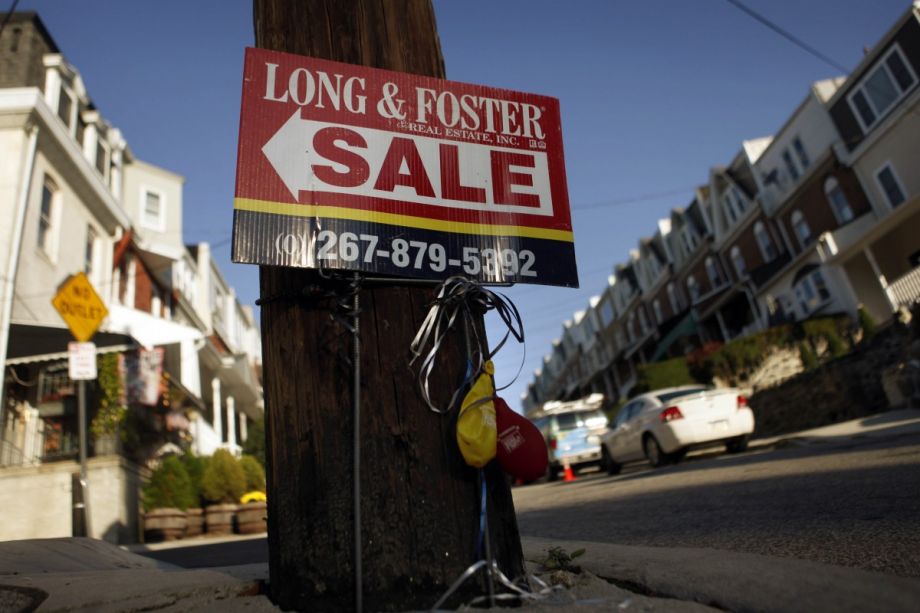Zillow’s Chief Economist Talks Gentrification, Zestimates and Affordable Housing

(AP Photo/Matt Rourke)
Stan Humphries oversees some of the country’s largest data sets on housing. As Zillow’s chief economist, he analyzes real estate patterns and identifies trends; his team posts findings on the site, making the industry more transparent and accessible to average consumers.
In January, Humphries and Zillow CEO Spencer Rascoff published The New Rules of Real Estate — a primer that debunks outdated myths and establishes new guidelines for purchasing real estate in a post-crash, gentrification-obsessed world. I spoke with him about the book, renters vs. homeowners, how much you can trust a Zestimate and more.
Headlines say America is becoming a nation of renters. What’s the perspective at Zillow?
Our belief is that empirically, we are not becoming a nation of renters. Right now our homeownership rate is in the 63 percent range. Historically since the mid-1960s the homeownership rate has been 63, 64 percent, on average. It may go a bit lower, but I doubt the rate will go lower than 63 percent.
Our belief is that empirically, we are not becoming a nation of renters. Right now our homeownership rate is in the 63 percent range. Historically since the mid-1960s the homeownership rate has been 63, 64 percent, on average. It may go a bit lower, but I doubt the rate will go lower than 63 percent.
For the third of us that do rent, it is probably a rational strategy given our income profiles, our ages, how mobile we are, etc. But I’m deeply concerned that renting in this country is no longer affordable. [Talking about the virtues] of being a homeowner has led us to take our eye off national policies that usually provide for sufficient levels of affordable rental housing.
Starting in the ’80s and ’90s, as a nation we made a large shift in how we wanted to provide affordable housing — away from public provision of housing towards the private provision of housing, stimulated by low-income housing tax credits and Section 8 subsidies. For whatever reason, that’s not getting the job done. We do a lot of work about rental affordability and right now, according to our numbers, renting has never been less affordable in this country. In more than 270 metros, you pay more than 30 percent of your income towards rent.
And it’s a problem where owners can be lulled into a false sense of confidence, thinking, ‘That’s a problem for some other group. Not me.’ It’s a problem for everyone, because today’s renters are tomorrow’s buyers.

(Credit: Zillow)
How could lower-income individuals empower themselves to maximize their first home purchases?
One of the chapters of The New Rules of Real Estate covers the “halo effect.” People have a tendency to buy in a premium neighborhood, but the reality is that by the time that neighborhood is considered premium, a lot of appreciation has already occurred. You are going to see more relative value by buying in an adjacent neighborhood, which is not yet hot. That’s certainly a great strategy for buying in low-income neighborhoods. The gentrification strategy is a different one. There, you need to identify its hallmarks: look at places with older homes, lower homeownership rates, and pretty good access to popular neighborhoods.
One of the chapters of The New Rules of Real Estate covers the “halo effect.” People have a tendency to buy in a premium neighborhood, but the reality is that by the time that neighborhood is considered premium, a lot of appreciation has already occurred. You are going to see more relative value by buying in an adjacent neighborhood, which is not yet hot. That’s certainly a great strategy for buying in low-income neighborhoods. The gentrification strategy is a different one. There, you need to identify its hallmarks: look at places with older homes, lower homeownership rates, and pretty good access to popular neighborhoods.
A few months ago I wrote about how “walls” have fenced in some of the heat of gentrification in Philadelphia. How would you explain that phonomenon?
On the data science side of the house — where we build valuation models — that’s something we have to contend with quite a bit. That’s not something we looked at with respect to the halo effect and gentrification, but it’s something that does exist in real estate markets. It’s hard to account for. Sometime those problems are rational — like if a main arterial isn’t walkable. They tend to be barriers to development. It’s hard for the “hotness” of one side of the street to transmit to the other side.
On the data science side of the house — where we build valuation models — that’s something we have to contend with quite a bit. That’s not something we looked at with respect to the halo effect and gentrification, but it’s something that does exist in real estate markets. It’s hard to account for. Sometime those problems are rational — like if a main arterial isn’t walkable. They tend to be barriers to development. It’s hard for the “hotness” of one side of the street to transmit to the other side.
In places where tax assessments aren’t reliable, how much should people trust Zestimates?
The way that the Zestimate model is constructed is that if tax assessments aren’t reliable or helpful as input into the Zestimate, then the model won’t use them. For example, tax estimates in California are not well-coordinated with home values, because of Proposition 13, which limits the amount of increase in your tax assessment. Over time, your assessment no longer tracks the underlying value of the home. The models automatically exclude tax assessments in California, because they are not very predictive. I would say that people who have those questions can go to the bottom of every page and click on a link that says “Zestimate accuracy” and see in a specific county, how accurate the Zestimate has been over the past three months.
The way that the Zestimate model is constructed is that if tax assessments aren’t reliable or helpful as input into the Zestimate, then the model won’t use them. For example, tax estimates in California are not well-coordinated with home values, because of Proposition 13, which limits the amount of increase in your tax assessment. Over time, your assessment no longer tracks the underlying value of the home. The models automatically exclude tax assessments in California, because they are not very predictive. I would say that people who have those questions can go to the bottom of every page and click on a link that says “Zestimate accuracy” and see in a specific county, how accurate the Zestimate has been over the past three months.
Would you ever consider quality of a school district, crime or other social factors in Zestimates?
The answer is, not directly, no. But we do look at geospatial modeling as a key component to the Zestimate model. That means that the price signal for homes that sell in good school districts already indirectly incorporates that fact. There’s no variable in the model that says, ‘This school is a little bit better, therefore your home prices are going to go up.’ Instead, what happens is that the models in that area will figure out for whatever reason, homes in this boundary here sell for more than outside that boundary. The models will pick that up. They just won’t know that it’s associated with a good school district or, negatively, with a high crime area.
The answer is, not directly, no. But we do look at geospatial modeling as a key component to the Zestimate model. That means that the price signal for homes that sell in good school districts already indirectly incorporates that fact. There’s no variable in the model that says, ‘This school is a little bit better, therefore your home prices are going to go up.’ Instead, what happens is that the models in that area will figure out for whatever reason, homes in this boundary here sell for more than outside that boundary. The models will pick that up. They just won’t know that it’s associated with a good school district or, negatively, with a high crime area.
This interview has been edited for length and clarity.
The Equity Factor is made possible with the support of the Surdna Foundation.

Alexis Stephens is Next City’s urban economics fellow. She’s written about housing, pop culture, global music subcultures, and more for publications like Shelterforce, Rolling Stone, SPIN, and MTV Iggy. She has a B.A. in urban studies from Barnard College and an M.S. in historic preservation from the University of Pennsylvania.



No comments:
Post a Comment
Please leave a comment-- or suggestions, particularly of topics and places you'd like to see covered